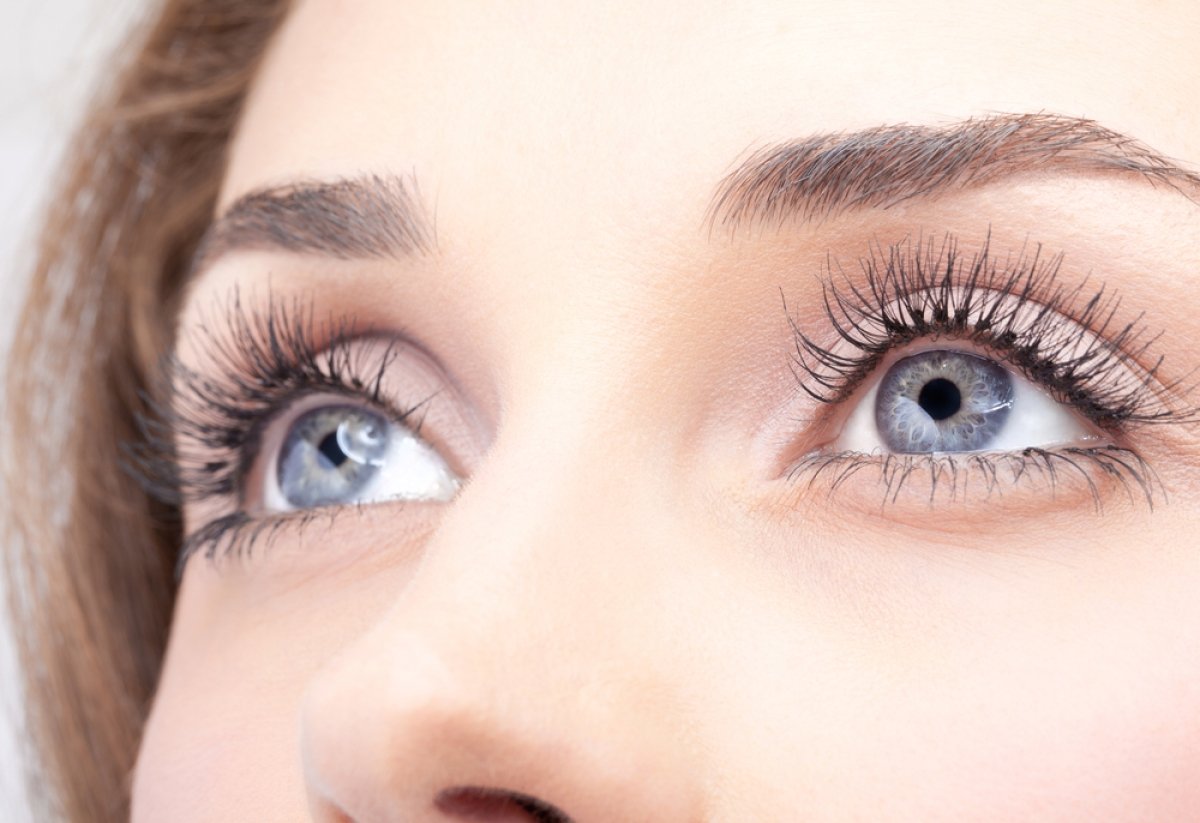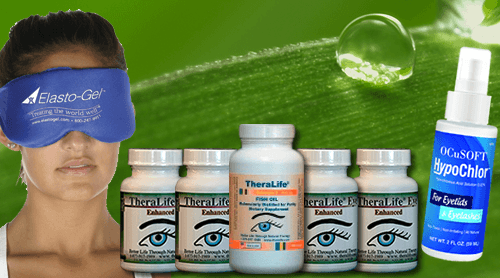Theralife's products offer comprehensive solutions for managing blepharitis and related eye conditions, providing significant benefits to its customers. With a focus on natural, holistic remedies, Theralife addresses symptoms like redness, swelling, and crusting through specialized supplements and eye care products. These products aim to restore gland function, reduce inflammation, and combat bacterial colonization, offering relief for both anterior and posterior blepharitis. In addition to product benefits, Theralife provides valuable insights into lifestyle changes and home remedies, such as warm compresses and eyelid scrubs, enhancing overall eye health. By using Theralife's products, customers can effectively manage their symptoms and prevent complications, ensuring optimal eyelid care.
Key Takeaways
- Blepharitis is an inflammatory condition of the eyelids caused by sebaceous gland dysfunction or bacterial colonization.
- Symptoms include redness, swelling, itchiness, crusting, and a gritty sensation in the eyes.
- Effective treatment involves eyelid hygiene, warm compresses, and sometimes prescription antibiotics or anti-inflammatory medications.
- Home remedies include using diluted baby shampoo for eyelid scrubs and incorporating omega-3-rich foods into your diet.
- Seek professional care for persistent symptoms, vision changes, or frequent flare-ups despite home treatment.
What Is Blepharitis and How Does It Affect the Eyelids?
Blepharitis is an inflammatory condition affecting the eyelids, often leading to discomfort and irritation. It's a chronic condition characterized by inflammation at the base of the eyelashes, disrupting normal eyelid function. Effective eyelid hygiene plays an important role in managing blepharitis, as regular cleaning helps reduce debris and bacterial load. You'll find that maintaining this hygiene is vital to prevent flare-ups and manage symptoms. The inflammation often results from sebaceous gland dysfunction or bacterial colonization, exacerbating the condition. Since blepharitis is recurrent, understanding its mechanisms allows you to implement preventive strategies effectively. Consistent eyelid hygiene can greatly mitigate irritation and provide relief, improving overall ocular health. Remember, addressing blepharitis requires a long-term commitment to proper eyelid care. Many patients find relief through prescription treatments like antibiotics or clinical procedures, which can be integral to managing the condition effectively.
Identifying the Common Symptoms of Blepharitis
How can you tell if you're experiencing blepharitis? Symptom recognition is vital. Eyelid discomfort often manifests as redness, swelling, or itchiness. You might notice crusting at the base of your eyelashes or a gritty sensation in your eyes. These symptoms can fluctuate in intensity, but persistent eyelid irritation warrants attention. Effective management is crucial, as dedicated eyelid cleansers are more effective than baby shampoo in reducing bacteria.
Consider the following common symptoms:
| Symptom | Description |
|---|---|
| Redness | Inflammation causing a red appearance of eyelids |
| Swelling | Puffiness due to tissue inflammation |
| Itchiness | Persistent urge to scratch the eyelid area |
| Crusting | Flaky deposits at the eyelash base |
| Grittiness | Feeling like there's sand in your eyes |
Recognizing these signs early is important for effective management. If you're experiencing any of these symptoms consistently, consulting a healthcare professional is advised to prevent complications and guarantee proper care.
Understanding the Causes of Blepharitis
Although understanding the origin of blepharitis can be complex, identifying the primary causes is vital for effective management.
Blepharitis often results from bacterial colonization on the eyelid margins, underscoring the need for rigorous eyelid hygiene. Seborrheic dermatitis or dysfunction of the meibomian glands can exacerbate this condition.
Environmental triggers, such as dust and pollen, may further irritate the eyelids, intensifying symptoms. Allergic reactions to cosmetics or contact lenses can also contribute.
Studies indicate that maintaining clean eyelids reduces bacterial load and inflammation. Regular cleansing with mild solutions can prevent blockage of oil glands, providing symptomatic relief.
Addressing these causes with targeted interventions is essential for managing blepharitis effectively, minimizing discomfort, and preventing recurrence.
Prioritize eyelid hygiene to control this condition.
Additionally, Meibomian gland dysfunction is a primary cause of blepharitis, emphasizing the importance of identifying and treating this underlying issue to manage symptoms effectively.
Distinguishing Between Different Types of Blepharitis
When differentiating between types of blepharitis, understanding the clinical presentation is vital for accurate diagnosis and effective treatment.
Blepharitis is primarily categorized into anterior and posterior types, with further subdivisions. Anterior blepharitis affects the eyelid's front margin, often linked to seborrheic dermatitis or staphylococcal infection.
Posterior blepharitis involves the meibomian glands, typically associated with meibomian gland dysfunction.
Types comparison shows that symptoms overlap, including redness, itching, and crusting of the eyelids. However, posterior blepharitis may also present with oily secretions and frothy tears.
It's important to highlight these distinctions as they guide treatment strategies, such as lid hygiene for anterior and warm compresses for posterior blepharitis. Approximately 30% of chronic cases involve Demodex mites, which can exacerbate symptoms and complicate treatment.
Recognizing these differences guarantees targeted management and symptom relief.
Diagnosis: How Is Blepharitis Confirmed by Healthcare Professionals?
Why is precise diagnosis essential in managing blepharitis? Correct identification of blepharitis underpins effective treatment and symptom relief. Healthcare professionals start with a thorough eyelid examination, evaluating inflammation, redness, and crusting at the eyelid margins. This detailed inspection helps differentiate blepharitis from other ocular conditions.
Next, diagnostic tests may be employed to confirm the presence of blepharitis. These tests include slit-lamp examination, which provides a magnified view of the eyelid structures, and culture tests to identify bacterial presence.
In some cases, a biopsy may be necessary to rule out more severe conditions. These methods guarantee an accurate diagnosis, guiding tailored treatment strategies. Avoiding eye makeup during active blepharitis is crucial to prevent further irritation and facilitate recovery.
Exploring Treatment Options for Blepharitis
When managing blepharitis, you'll find that home care strategies like warm compresses and eyelid scrubs are often recommended to alleviate symptoms. In cases where these measures are insufficient, healthcare professionals might prescribe medical treatments such as topical antibiotics or anti-inflammatory medications. It's essential to adhere to these evidence-based approaches to effectively control blepharitis and prevent complications. Regular follow-ups with healthcare professionals may be necessary to monitor chronic conditions and ensure effective management.
Home Care Strategies
Although blepharitis can be a persistent and irritating condition, implementing effective home care strategies can greatly alleviate symptoms.
Prioritizing eyelid hygiene is essential. Gently cleanse your eyelids daily with a mild cleanser to remove debris and bacteria. Warm compresses can help to loosen crusts and alleviate discomfort by improving meibomian gland function.
Follow these steps for ideal relief:
- Apply warm compresses: Use a clean, warm cloth over your closed eyelids for 5-10 minutes.
- Perform eyelid massage: Gently massage the eyelids to promote gland secretion.
- Adopt routine eyelid hygiene: Use a dedicated eyelid scrub or diluted baby shampoo.
- Avoid eye makeup: Limit use to prevent further irritation or contamination.
These strategies, grounded in clinical expertise, can greatly improve your eyelid health. Omega-3 fatty acids offer anti-inflammatory benefits, with clinical studies supporting their supplementation for symptom improvement.
Medical Treatment Options
In addition to home care measures, medical treatment options for blepharitis offer further relief and management of the condition. You might consider prescription medications such as antibiotics or anti-inflammatory agents to target underlying infection or inflammation. Here's a quick overview of potential treatments:
| Treatment Option | Purpose |
|---|---|
| Antibiotic ointments | Reduce bacterial infection |
| Oral antibiotics | Address severe cases |
| Anti-inflammatory drops | Decrease swelling and redness |
| Alternative therapies | Complement traditional care |
| Lifestyle modifications | Prevent flare-ups |
Alternative therapies, like omega-3 supplements, may complement standard treatments. Additionally, lifestyle modifications, including regular eyelid hygiene and managing environmental factors, play an essential role. Importantly, chronic blepharitis is often associated with dry eyes due to gland dysfunction, necessitating a comprehensive approach to treatment. Always consult your healthcare provider to tailor a plan that suits your specific needs and guarantees effective blepharitis management.
Home Remedies and Lifestyle Changes to Manage Blepharitis
Effectively managing blepharitis at home involves understanding and implementing practical lifestyle changes and remedies.
Prioritizing eyelid hygiene is essential in reducing inflammation and discomfort. Consider these natural remedies to manage symptoms:
- Warm Compresses: Apply a clean, warm compress to your eyelids for 5-10 minutes. This helps loosen crusts and unclog oil glands.
- Eyelid Scrubs: Use diluted baby shampoo or a specialized eyelid cleanser on a clean cotton pad to gently scrub your eyelid margins.
- Omega-3 Fatty Acids: Incorporate omega-3-rich foods like flaxseeds and fish into your diet to support meibomian gland function.
- Hydration and Humidity: Maintain adequate hydration and use a humidifier to prevent dryness that exacerbates blepharitis symptoms.
Additionally, routine eye exams are crucial in detecting early signs of dry eye syndrome and monitoring overall eye health.
These strategies can enhance your blepharitis management, improving overall eye health.
Tips for Preventing Blepharitis Flare-Ups
Preventing blepharitis flare-ups requires proactive measures to maintain eyelid health and function.
Implement consistent eyelid hygiene by cleansing your eyelids daily with a mild, non-irritating cleanser. This practice reduces bacterial buildup and eyelid inflammation.
Incorporate dietary adjustments to support overall eye health. Consider increasing omega-3 fatty acid intake through foods like salmon, flaxseeds, or walnuts, which may help reduce inflammation. Additionally, limit consumption of refined sugars and processed foods known to exacerbate inflammatory conditions.
Adopt a routine of warm compresses to improve meibomian gland function, ensuring proper oil secretion and tear film stability.
Avoid eye makeup that can irritate or clog eyelid glands.
Adding hypoallergenic makeup options to your routine can further support eyelid hygiene and prevent symptom exacerbation.
When to Seek Professional Care for Blepharitis
While proactive measures greatly reduce the risk of blepharitis flare-ups, certain situations necessitate professional care. Knowing when to consult a healthcare provider guarantees timely intervention and prevents complications.
Seek expert guidance if you experience:
- Symptoms escalation: Persistent irritation, redness, or swelling that worsens despite home treatment.
- Vision changes: Blurring or loss of vision, which may indicate a more severe underlying condition.
- Painful lesions: Development of painful, pus-filled sores near the eyelid margin.
- Chronic recurrence: Frequent flare-ups that disrupt daily activities and resist standard management.
These signs suggest the need for a thorough evaluation by an ophthalmologist or optometrist. They can provide tailored treatment plans, possibly including prescription medications or specialized therapies, to effectively manage your condition.
Early consultation mitigates risks and enhances your eyelid health.
Frequently Asked Questions
Can Blepharitis Cause Vision Changes or Loss?
You might wonder if blepharitis leads to vision changes or loss. Typically, it doesn't cause permanent vision changes, but symptoms like blurry vision can occur. These arise from inflammation disrupting tear film stability.
Treatment options include eyelid hygiene, warm compresses, and topical antibiotics, which can alleviate symptoms. In rare cases, untreated blepharitis might contribute to long-term complications affecting vision.
It's essential to follow evidence-based care for ideal eyelid health.
Is Blepharitis Contagious to Others?
Blepharitis isn't contagious, so you don't need to worry about passing it like a hot potato.
The causes of blepharitis usually involve bacterial infections or skin conditions.
Treatment options focus on managing symptoms, like meticulous eyelid hygiene and topical antibiotics.
Consult your ophthalmologist for personalized strategies, as untreated blepharitis can lead to complications.
Adhering to a structured care regimen guarantees you maintain peak eyelid health and prevent flare-ups.
Does Diet Impact the Severity of Blepharitis?
Your diet can indeed impact the severity of blepharitis. By making specific dietary adjustments, you can potentially reduce inflammation, which is a key factor in this condition.
Incorporating omega-3 fatty acids, found in fish or flaxseeds, and reducing saturated fats may help. Scientific evidence suggests that these changes can moderate the inflammatory response associated with blepharitis.
It's always wise to consult with a healthcare professional before making significant dietary changes.
Are There Specific Makeup Products to Avoid With Blepharitis?
When dealing with blepharitis, you should avoid makeup products containing harsh ingredients like alcohol or fragrances, as these can irritate your eyes.
Prioritize eyelid hygiene by choosing hypoallergenic, non-comedogenic formulas. Products labeled safe for sensitive skin are ideal.
Be cautious with waterproof makeup, as it's harder to remove and may exacerbate symptoms.
Evidence suggests maintaining clean eyelids and avoiding irritating makeup ingredients helps manage blepharitis more effectively.
Always consult your eye care professional.
Can Stress Contribute to Blepharitis Flare-Ups?
Stress greatly stirs blepharitis by exacerbating inflammation and irritation.
Anxiety effects can amplify symptoms, making stress management essential. Engaging in relaxation techniques, like meditation or deep breathing, can mitigate these triggers.
Evidence-based studies suggest that reducing stress levels lessens the likelihood of flare-ups.
Prioritizing stress management not only benefits your eyelid health but also enhances overall well-being, ensuring effective eyelid care and comfort.
Conclusion
When it comes to managing blepharitis, TheraLife.com offers a range of products that provide significant benefits to its customers. The website provides comprehensive information on the symptoms and causes of blepharitis, alongside a variety of treatment options, including both medical and home remedies. TheraLife's products are designed to help tailor a care regimen that suits individual needs, offering preventive measures to shield against future flare-ups. Their offerings also include guidance on managing related conditions like dry eyes, uveitis, and chalazion, ensuring a holistic approach to eyelid health. If symptoms persist, professional help is recommended, but TheraLife.com empowers users to stay informed and vigilant about their eyelid health, reinforcing the importance of overall well-being.




